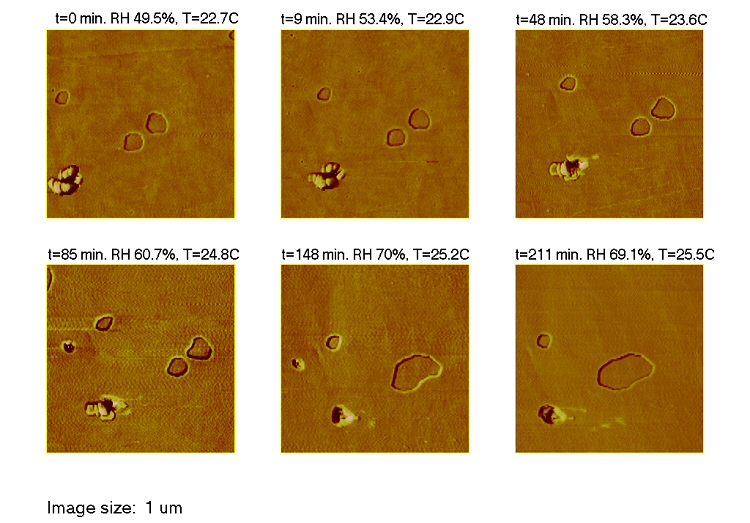Many coatings and thin films are used in modern industry. The performance of these coatings can depend on their character at the micron and nanometer scale. Whether they are homogeneous or separate into different domains, whether they are continuous or perforated, can determine whether they function properly or not. The AFM is a valuable tool in measuring such characteristics of films and coatings.
Aluminum beverage cans are coated on their inner surface with a polymer material to protect the contents from direct contact with the aluminum. This seemingly simple application reveals some complexity when viewed in the Atomic Force Microscope with phase imaging.

Dark is low. The right hand image is phase data.
The different colors/brightness levels represent
different material domains. Note that these
material regions are not associated with specific
features in the height image. The polymer material
on the inner surface of the beverage can has separated
in application into different regions. Further analysis
would be necessary to determine if this separation is
associated with performance problems in use and
whether it is characteristic of the material itself or
produced by the production process.
Lactose is a common excipient used in medications. Lactose is also a component of films used to coat medicine tablets. These coatings make the tablets smoother and less likely to start dissolving in the mouth or esophagus, slowing down the enzymes that dissolve them until they reach the stomach. As such, they are important to proper functioning of the medication. AFM analysis can be a vital tool to understanding how these coatings work and ensuring that they work consistently every time.

These are just two of the films/coatings we have examined in the Atomic Force Microscope. Whether it’s studying the surface roughness and weathering of paint films, the effects of chemical exposure to protective coatings, or complex biofilms, Atomic Force Microscopy can help make your films and coatings better.